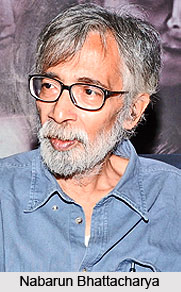 Nabarun Bhattacharya was an acclaimed Indian writer who was known to be committed to a revolutionary and radical aesthetics. He authored his compositions in Bengali language. His 1993 novel Herbert won the Sahitya Akademi Award and was adapted into a feature film in the year 2005, with the same name, by Suman Mukhopadhyay.
Nabarun Bhattacharya was an acclaimed Indian writer who was known to be committed to a revolutionary and radical aesthetics. He authored his compositions in Bengali language. His 1993 novel Herbert won the Sahitya Akademi Award and was adapted into a feature film in the year 2005, with the same name, by Suman Mukhopadhyay.
Early Life of Nabarun Bhattacharya
Nabarun Bhattacharya was born on 23rd June 1948 at Baharampur in the Indian state West Bengal. He was the only child of the noted writer Mahasweta Devi and actor Bijon Bhattacharya. He pursued his higher studies in Kolkata, firstly in Geology and then in English from Calcutta University.
Career of Nabarun Bhattacharya
Nabarun Bhattacharya had authored fiction. In addition to this he had also written poetry among which Ei Mrityu Upotyoka Aaamaar Desh Na (This Valley of Death Is Not My Country) is a prominent one. He introduced a strange set of human beings to the Bengali readers called Fyataru through his magic realist writings. They refer to an anarchic underclass fond of sabotage who posses the ability to fly by uttering the mantra `fyat fyat sh(n)aai sh(n)aai`. The mantra was also used in a song composed by the Bengali band Chandrabindoo in one of its albums. These characters have appeared in his books titled Fyatarur Kumbhipaak, Fatarur Bombachaak, Kaangaal Maalshaat and Mausoleum. Kaangaal Maalshaat was dramatized by Suman Mukhopadhyay, a thespian.
Death of Nabarun Bhattacharya
Nabarun Bhattacharya died on 31st July 2014 owing to intestinal cancer at Thakurpukur cancer hospital in Kolkata.
Major Works of Nabarun Bhattacharya
| Kaangaal Maalshaat |
| Herbert |
| Lubdhak |
| Ei Mrityu Upotyoka Aamaar Desh Na |
| Halaljhanda o Onyanyo |
| Mahajaaner Aayna |
| Fyaturur Kumbhipak |
| Raater Circus |
| Anarir Naarigyan |













